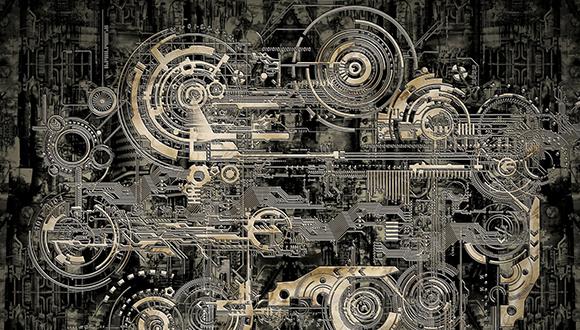School of Mechanical Engineering Shirly Steinlauf and Avigail Bar Lev
School of Mechanical Engineering Seminar
Wednesday, December 06, 2017 at 14:00
Wolfson Building of Mechanical Engineering, Room 206
A micro-mechanical fatigue model for failure prediction of laminated composites
Avigail Bar-Lev
MSc Student of Prof. Rami Haj-Ali
Composite materials are made from two or more constituents yielding a new material with tailored averaged properties. Polymeric based laminated composite materials are widely used in aero structures, in addition to a wide range of other applications. Due to their extensive use, it is important to develop theories and techniques for modeling the fatigue damage and life-cycle of laminated composites.
The current study extends the Generalized Method of Cells (GMC) micromechanical model to include fatigue behavior at both the fiber and matrix. The GMC micromodel divides the periodic repeated unit cell (RUC) that represents the heterogeneous material into subcells. In addition to the RUC fiber and matrix subcells, other phases can be included, such as voids and interphases.
The proposed fatigue approach combines two stress-based failure criteria, applied for the fiber and matrix subcells. Each criterion is taken as a polynomial form similar to the Tsai-Wu anisotropic criterion in the static failure case. The coefficients are calibrated based on experimental life-cycle data for fatigue of laminated composites.
The new GMC fatigue modeling of a uniaxial layer is incorporated into the analysis of classical lamination theory for the prediction of fatigue in laminated composites. The proposed model is calibrated and verified using different fatigue test results reported in the literature. Good overall results are shown for the ability of the proposed approach to predict the life-cycle of different laminates. Finally, the proposed approach has been used to examine the effect of voids and weakened fiber-matrix interface on the overall fatigue behavior. The proposed GMC fatigue modeling approach can be integrated with commercial based finite-element software to predict the fatigue damage of laminated composite structures.
EXPERIMENTAL STUDY OF METHODS FOR TREATMENT OF AORTIC ARCH ANEURYSM
Shirly Steinlauf
MSc of Prof. Liberzon Alex and Prof. Avrahami Idit
The aorta, the major blood vessel in the body, arises upward from the heart and then forms to a curve shape that called the ‘aortic arch’. Three main branches originate from the aortic arch, supply blood to the brain and upper body. When the walls of the aortic arch dilate and weaken, causing an aneurysm, severe internal bleeding can occur. This complex aortic pathology requires surgical or medical intervention.
Open-chest surgical is the traditional method to treat aortic arch aneurysms. Although this treatment attempts to reconstruct the original anatomical configuration, it is a complex and risky operation, as it requires period of intentional stops the heart beating and limited cerebral perfusion. Endovascular stent grafting repair is less invasive alternative to open surgery and conducted by placing a stent-graft across the aneurysm site. Two common endovascular stents grafting procedures, for aortic arch aneurysm repair, are the hybrid and chimney endovascular approaches. However, due to a limited access to the pathological region, a total new configuration is created for the aortic arch and its three upper branches, which may lead to other problems unrelated to the treated aneurysm.
The aim of this thesis is to examine, from a hemodynamic point of view, the blood flow in the aortic arch aneurysm and the three common treatment approaches described above. To this aim, four prototype models were procured, representing typical anatomical geometries. Flow patterns, blood flow velocity and shear stress in these models were studied using particle image velocimetry (PIV) technique and a mock circulatory loop (MCL) system that enable testing the different approaches under systemic circulations of a normal human.
According to the findings, in terms of blood supply to the brain and upper body (i.e., perfusion), the hybrid method is the preferred configuration, as it supplies higher perfusion. It seems that the perfusion is affected mainly by the first artery (out of the three) arise from the aortic arch, in which the increase in flow as a function of heart rate (HR) was the most significant. With respect to the preferred model in terms of flow patterns, the flow patterns in the surgery model were smoothers with less distribution. The chimney case presented the most disturbed flow, with higher shear stress along the chimney graft and the larger number of local disturbed hemodynamic sites due to sharp curvature and bypass manipulations. The chimney procedure also, may allow blood leakage from the endograft sealed zone into the aneurysm.
This study results may shade light on the hemodynamic factors and risk for complications, and provide insight into ways to improve the endografts design and their placement technics.


